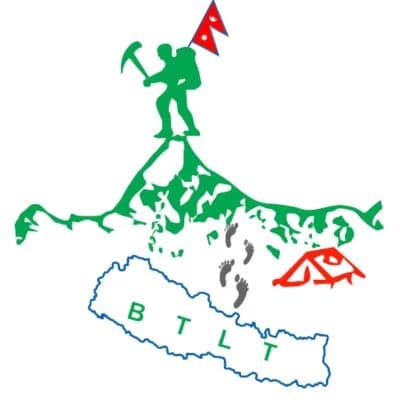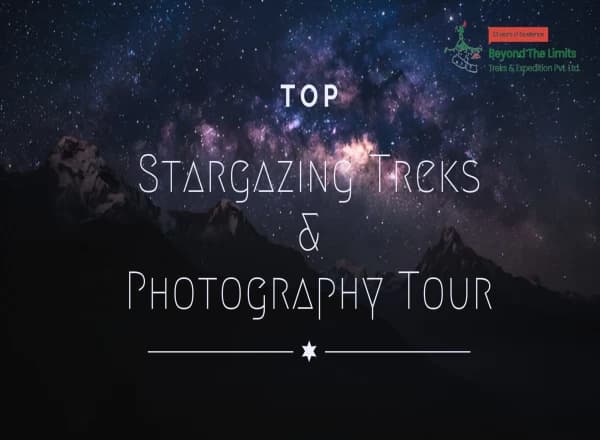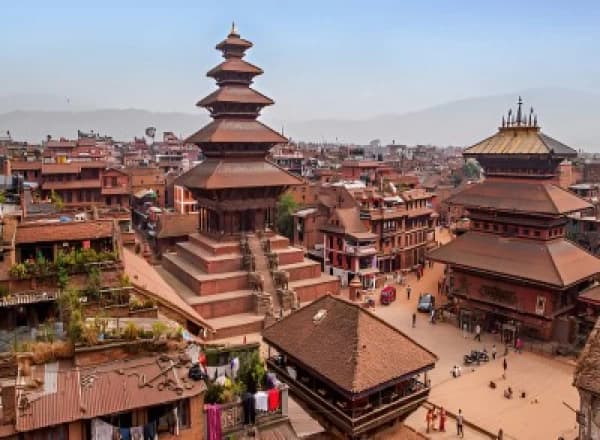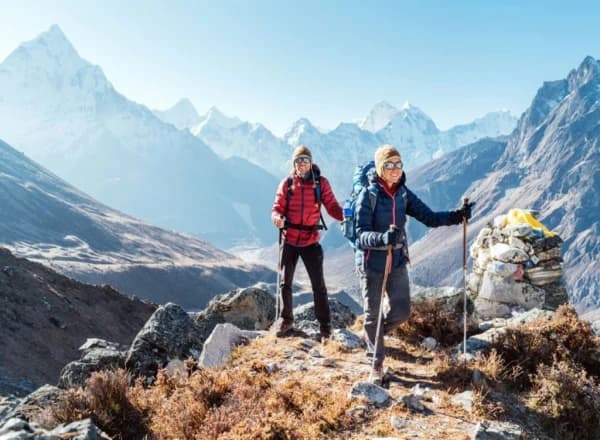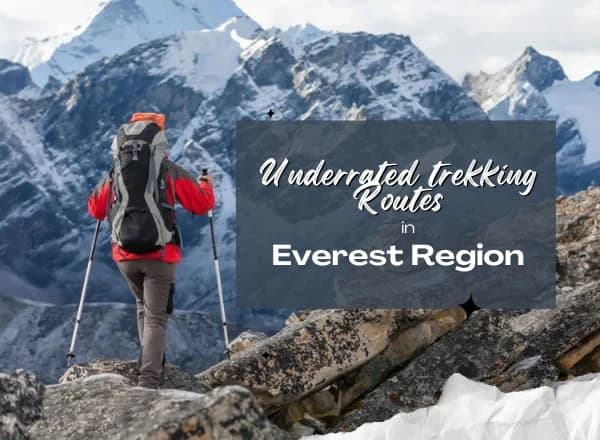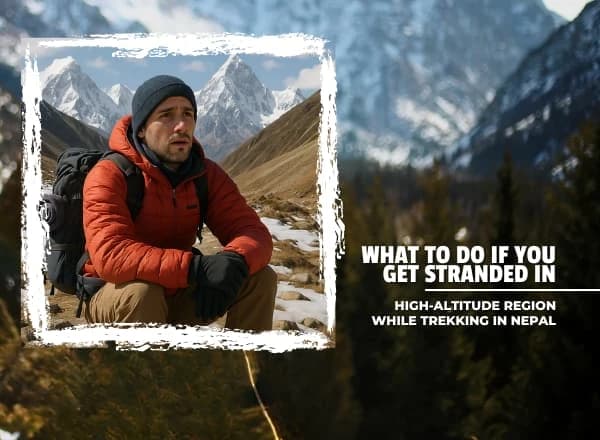Most Common Annapurna Base Camp Trek Frequently Asked Questions:
1) How long is the trek to Annapurna Base Camp?
✔︎ You can do the Annapurna Base Camp trek in a short or long style. For example, we are offering two Annapurna Base Camp Trek packages at the moment - Short Annapurna Base Camp Trek 6 Days and Annapurna Base Camp Trek 13 Days.
Note that if our proposed itinerary does not meet your requirements, you can customize it with us. You can make changes to the itinerary and services included in the package and pick your desired departure date.
Whether you are on a short vacation to Nepal or have ample time to explore the Himalayas, you can do the Annapurna Base Camp trek.
2) How difficult is the Annapurna Base Camp trek? What are the risks of altitude sickness on this trek?
✔︎ The Annapurna Base Camp trek is moderately difficult. This means that trekkers of all ages can do it with or without previous high-altitude experience. It is a beginner-friendly trek with a gentle pace and rugged terrain. Decent fitness is required because the trail ascends and descends throughout the way.
Likewise, the trail traverses diverse climatic zones, ranging from lush forests to glaciers. Every day, you will experience a rise in altitude. Trekkers have to constantly adjust to different environments and limited facilities. Trekking in the Himalayas is more than about physical challenges.
Fortunately, the Annapurna Base Camp trek route is one of Nepal's most commercialized trekking routes, so compared to offbeat treks, the services along the ABC trail are fine. Still, you have to make do with simple accommodation and food.
Overall, it is an adventurous trek through dense forests, rugged hillsides, and steep, narrow tracks. Do not expect light walking. On average, you will trek for 5 to 6 hours every day. As per your Annapurna Base Camp trek itinerary, you have to walk 95 km to 110 km or above.
The trek also demands mental effort. You have to push yourself to walk long hours and deal with high-altitude challenges. You will start trekking around 1,000 meters and touch 4,130 meters in just a few days. The trail gradually ascends, so a dedicated acclimatization day is not required on the ABC trek.
However, there is still a chance of altitude sickness, so you have to be careful and attentive to its symptoms. Some early signs of altitude sickness are vomiting, headache, insomnia, difficulty breathing, nausea, and appetite loss.
You should drink at least two liters of water and other fluids, such as soups, ginger honey tea, etc, daily. By keeping yourself hydrated, you have a high chance of avoiding altitude sickness. Similarly, ascend slowly, do not rush, and listen to your body.
Have ample food and get enough rest. The Annapurna Base Camp trek is already tiring, and you do not want to tire yourself more by rushing, stressing, or not enjoying the trip. Go with the flow and enjoy your time in the mountains.
3) Can beginners do the Annapurna Base Camp trek? How to train for the trek?
✔︎ Yes, beginner trekkers can do the Annapurna Base Camp trek. The trail has top-notch infrastructure for travelers, which makes this trek very accessible for all age groups. It is an adventure trek, so a little bit of effort is required.
You do not have to be super strong or athletic to do the ABC trek. Anyone can do Annapurna Base Camp trekking with decent fitness, good health, and willpower. Now, to prepare for the trek, you have to evaluate your fitness level.
As we have already mentioned, this trek requires 5 to 6 hours of walking each day, so you must determine whether you are capable of walking these hours daily. If your answer is no, you must prepare physically and mentally before starting the trek.
While booking your trip, have 4 to 6 weeks on hand to prepare yourself. Start with light, regular exercises and daily walking. Gradually increase your exercise intensity and walking hours. Aerobic exercises and strength training are recommended.
Focus on improving your stamina, endurance, and strength.

4) How much does the Annapurna Base Camp trek cost?
✔︎ The Annapurna Base Camp trek cost varies as per the itinerary. Likewise, your group size also affects the cost. The bigger the group, the better per head cost you will get. Nevertheless, the Annapurna Base Camp trek cost is one of the most affordable in Nepal.
For a standard two-week ABC trek with accommodation in Kathmandu and Pokhara, all transportation as per the itinerary, permits, guide and porter expenses, accommodation, and three meals a day during trekking, and the company's service charge and taxes, you can expect the cost to range anywhere from USD 850 to USD 1,450.
The package cost depends heavily on the services you will receive during the trek. You can customize the trek according to your budget as well. We have the best Annapurna Base Camp trek cost in the market, with fantastic service and a safety guarantee.
5) Is the Annapurna Base Camp trek harder than the Everest Base Camp trek?
✔︎ Both the Annapurna Base Camp trek and the Everest Base Camp Trek are considered moderate, beginner-friendly treks in Nepal. However, the ABC trek gains less altitude than EBC and can be completed in a shorter time. In contrast, the EBC trek route has much better services and luxury lodges.
Nevertheless, we rate the Annapurna Base Camp trek a bit more doable than the EBC trek. As both trekking routes are in different parts of the Himalayas in Nepal, you can choose the trek that suits your requirements.
6) Is the Annapurna Base Camp trek worth it?
✔︎ Yes, the Annapurna Base Camp trek is 100% worth it. This trek has everything that one must experience in Nepal: adventure, cultural richness, beautiful landscapes, stunning mountain vistas, diverse vegetation, nature, and different Nepali ethnic groups.
If you want to learn about Nepali communities and their culture and mountain lifestyle and witness breathtaking scenery in a short time, we highly recommend the Annapurna Base Camp trekking. Unlike most treks in Nepal, the ABC trek does not require much time, money, or effort.
7) Which month is best for the Annapurna Base Camp trekking?
✔︎ Nepal has four seasons, and the weather in the Himalayas is unpredictable in every season. Whichever trek you do in the Himalayas, the trail starts around the subtropical range and gains altitude gradually as you go above the treeline and touch the alpine zone.
Therefore, you will experience a wide variety of climates during trekking in all seasons. Spring (March to May), summer/monsoon (June to August), autumn (September to November), and winter (December to February) are the four seasons.
Spring and autumn are the best trekking seasons. These two seasons have comparatively stable weather and a preferred climate (neither too hot nor too cold). The Annapurna Base Camp trail and all other trekking routes are open throughout the Himalayas.
You will enjoy the best views, hospitality, and companionship. You can also do the Annapurna Base Camp trek in summer/monsoon and winter. However, there are added weather challenges. Between June and August/mid-September, the Annapurna region sees high rainfall.
Therefore, the trail is not in good condition, and there are leeches on the way. Likewise, a cloudy sky can sometimes obscure the views. On a positive note, this is the best time of the year to explore lush vegetation and gushing rivers and streams.
Similarly, in winter, the trail is covered with snow. You may have to deal with snowfall and temperatures below freezing point. The views may be blocked on some days. We love winter trekking to Annapurna Base Camp because the trail is not crowded, and the region looks magical.
8) Can you sleep at Annapurna Base Camp?
✔︎ Unlike most of the base camp treks in Nepal, you can sleep at Annapurna Base Camp. Sounds exciting, right? There are a handful of lodges off the glacier where trekkers spend the night at ABC.
The rooms are simple, but the fact that you have the chance to spend a night at a location like Annapurna Base Camp is surreal in itself.
9) Is it safe to trek to Annapurna Base Camp?
✔︎ Yes, it is safe to trek to Annapurna Base Camp. You will do this trek with a local guide and porter. They make sure the journey is safe and hassle-free. Our guide and porters have many years of expertise in leading foreigners in the Himalayas.
They are fluent in English and can also speak other languages. As they are the locals of the region, you will learn a lot of insights. The guide will get your best lodges and help you interact with locals. Likewise, porters carry duffel bags during the trek.
Not only that, but our office team in Kathmandu makes all the arrangements for the trek and obtains the necessary permits on your behalf, saving you a lot of leg work. Whether you are a solo trekker or trekking with your loved ones, we, Beyond the Limits Treks & Tour, will be your reliable travel partner in Nepal.
10) What should I wear during the Annapurna Base Camp trek?
✔︎ During the Annapurna Base Camp trekking, trekkers have to wear appropriate trekking clothes and shoes. You have to wear clothes in layers because you will encounter different climates along the trail. Your clothes must be breathable.
You can purchase trekking clothes, gear, and essentials in your country or upon arrival in Nepal. There are many trekking essential shops in Kathmandu and Pokhara that sell everything you may need for a trek in the Himalayas.
Likewise, if you are not a regular trekker and do not want to invest a lot of money in expensive gear, such as a sleeping bag, down jacket, etc, you can rent it.
11) Which is better, the Annapurna Circuit or the Annapurna Base Camp trek?
✔︎ The Annapurna Circuit and Annapurna Base Camp treks are excellent trekking programs in the Annapurna region. Both treks are completely different from one another.
The Annapurna Circuit trek is one of the toughest in Nepal. It crosses a high mountain pass called Thorong La and is an offbeat trek above 5,000 meters. Participants must be physically and mentally fit and possess previous trekking experience to do the Annapurna Circuit trek.
On the other hand, the Annapurna Base Camp trek is moderate and can be done by beginner trekkers. Both treks are scenically incredible. You should choose the one that best suits your fitness level.
12) Can I use the internet during my trek at Annapurna Base Camp? What about a hot shower and a charging facility?
✔︎ First, let's talk about the internet and network along the Annapurna Base Camp trek route. Do not get your hopes high. The network or internet connection along the ABC trail is not reliable. You may get a network at the start of the trek (in the lower elevation).
However, the network will disappear the moment you enter a forested area. Likewise, some lodges offer paid WiFi service, but the internet is very slow. It is better not to expect a network on this trek. Our guide will be equipped with a satellite phone for emergency communication, so you do not have to worry.
You will have no issue with charging your phone during the trek, but you have to carry some money for the service. Usually, it costs USD 2 to USD 3 per device. You can bring extra batteries, a power bank, or a solar charger.
Hot showers are also paid service and can cost USD 4 to USD 7 per bath. Lodges provide hot water in the bucket for the shower. Hot showers may not be available at higher elevations because of frozen water throughout the year.
13) How are the accommodations and food on the Annapurna Base Camp trail?
✔︎ Along the Annapurna Base Camp trek route, accommodation and food are decent. Lodges are basic but provide all essential services, such as rooms, washrooms, food, charging, etc. Usually, the Annapurna Base Camp trek package includes twin-shared rooms unless you do not especially ask for a single room.
Note that single rooms are limited and cost extra money. The rooms are small in size and mainly have two or three beds. You will get a clean space to spend the night. Washrooms are common as well.
Nowadays, Western-style toilets are available in many places, but you may have to use squat toilets in some places. Trekkers are not allowed to enter the kitchen. The dining area is the common space where you can mingle with fellow trekkers and the locals.
There is also no heating system in the rooms, so we recommend trekkers carry a sleeping bag. Blankets and bedding are usually clean, but we do not recommend they be spotless. So, if you are sensitive, please carry a pillowcase and a bedsheet.
Lodges also provide meal service to the trekkers. The menu is quite decent along the Annapurna Base Camp trek route. You will have a variety of options to choose from. Nepali cuisine will be the center of attraction during the trek.
Your breakfast menu will look like this- toast, eggs, sausage, fruits, oatmeals, muesli, cornflakes, chapati, porridge, soups, etc. You can choose the food you want. Likewise, for main meals, options such as dal bhat, fried rice, rice with curry, non-veg dishes, pasta, pizza, chapati, buyers, etc, are available.
During the trek, we highly recommend sticking to veg food to avoid any risk of getting an upset stomach. Drinking water is also available throughout the way, so you do not have to worry about that. Many types of non-alcoholic beverages are available for the trekkers.
14) Is the Annapurna Base Camp trek route crowded?
✔︎ In the peak trekking seasons (spring and autumn), the Annapurna Base Camp trek route can get crowded. If you are someone who loves other companies, you will not find a little bit of crowd bothering you.
The environment will be joyful, and of course, you will have your alone time, as every trekker walks at their own pace. However, if you are looking to experience tranquil trails and fewer human interactions, you can either trek at the start or end of the peak trekking seasons or during the off-season.
Months such as January, February, early March, late May, June, July, August, early September, and December are the perfect time of the year to avoid crowds.
15) Can you do the ABC trek without a guide? Is a porter necessary?
✔︎ On April 1st 2023, there was a rule change that prohibited for foreigners from trekking to Annapurna Base Camp without a guide; however, with many public and local people protesting, the decision was withdrawn, making it accessible for solo travelers also. The motive was to decrease the number of foreigners getting lost in the trail, so follow the trail while trekking.
We highly recommend you get in touch with us for more information on solo trekking. One way to experience a solo trek is by doing a private trek with us.
On a private trek, we curate the trek according to your needs. You will be supported by a guide and a porter, but there will be no one else in the group. Even though the Annapurna Base Camp trek route is famous and well-established, you cannot underestimate the rugged terrain and professional support it demands.
Trekking with a guide ensures your safety, fun, adventure, and knowledge about the region. They will do their best to motivate you to complete the trek. You will learn about companionship and many other life lessons. As for the porter, it is necessary if you like to enjoy the scenery and trail without the load in your back.

